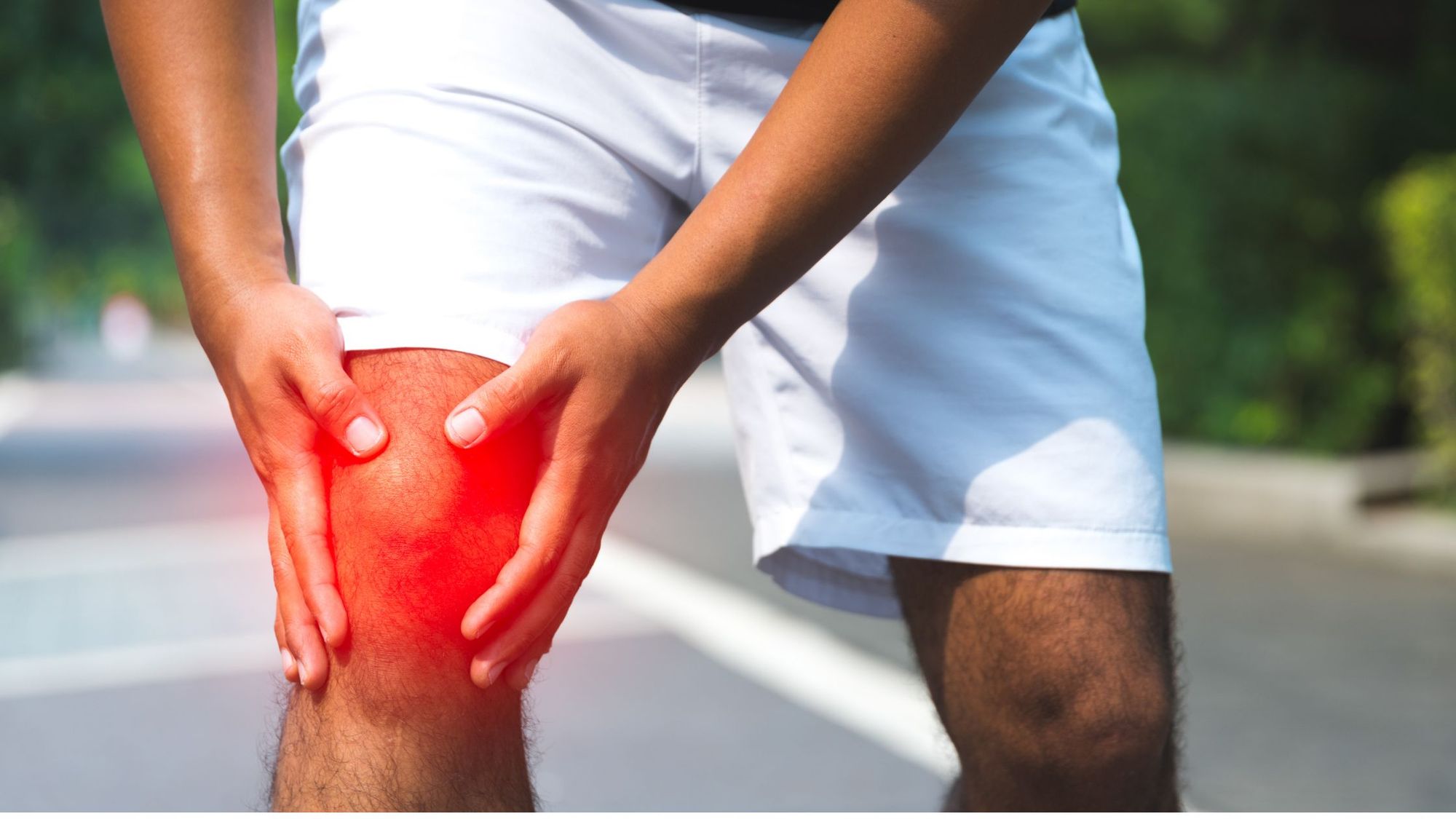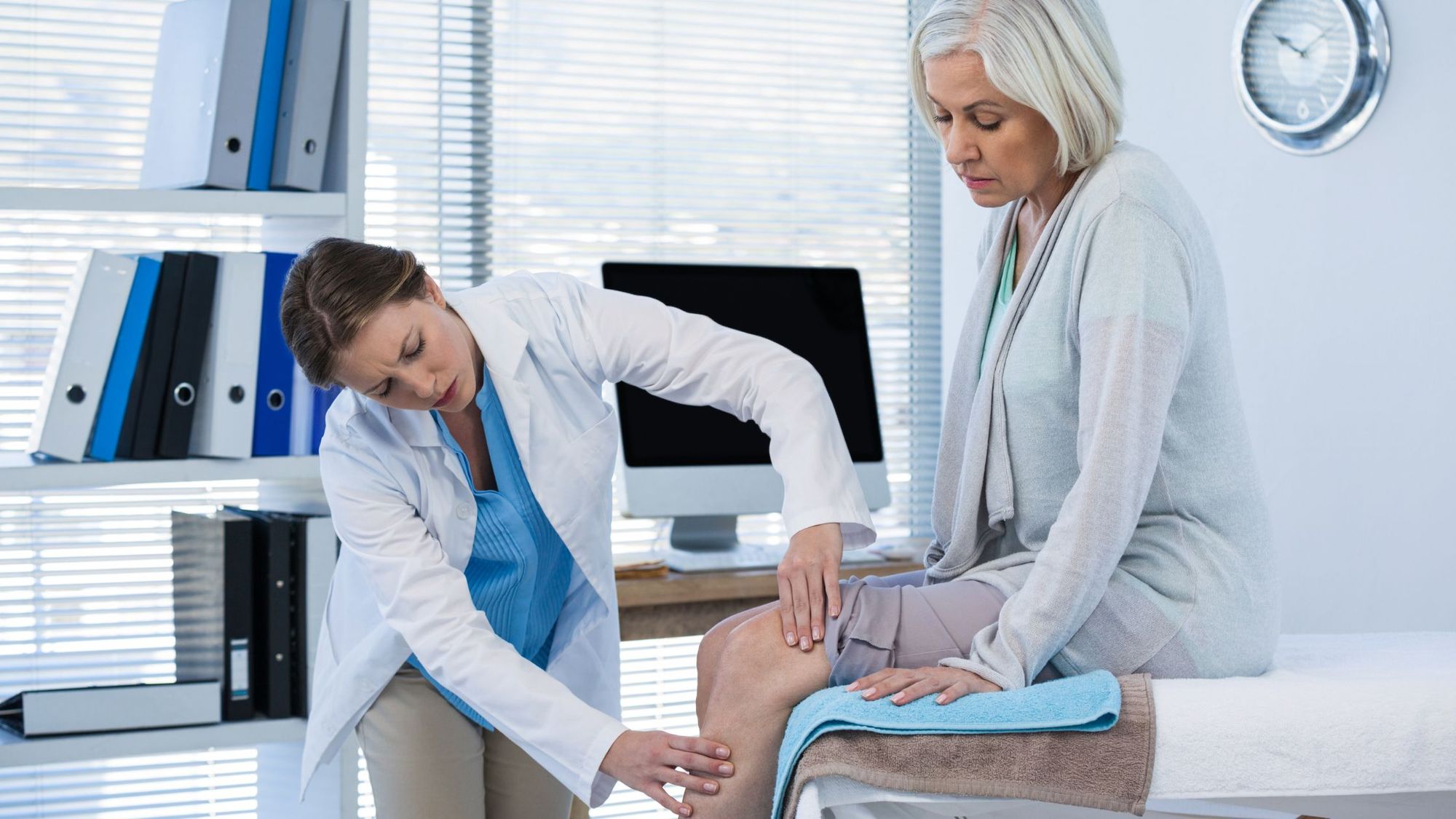
Suffering from knee pain after running is pretty common, and it can be quite uncomfortable. While running is fantastic for your cardiovascular health, and great for managing your weight or staying fit, it can often be problematic for your joints. Every time your foot hits the pavement on a run, you’re sending shockwaves through your muscles and skeletal structure, which can result in some discomfort. Knee pain after running can be quite frustrating, especially when it hurts to walk because of it.
According to some studies, half of all running-related injuries are to do with the knees.
The type of pain you experience, and the extent of your injury, can vary depending on a number of factors. Sometimes, damage to the structure inside and outside of the knee joint can even lead to tears, sprains, dislocations, and even fractures.
Below are some of the most common reasons for knee pain after running, and what you can do to help resolve it:

1. Runner’s Knee
Perhaps the most common knee pain complaint among runners is runner’s knee, or “chondromalacia patellae”. During a running session, the patella (or kneecap) can shift out of alignment with the rest of your leg. This causes the cartilage underneath to become irritated and inflamed.
If you’re experiencing knee pain after running in the form of runner’s knee, you may notice a consistent pain behind your knee after running, as well as discomfort when walking up or downstairs, squatting, kneeling, or sitting.
Runner’s knee can occur more often when you increase the length and speed of your run too quickly. You might also experience this type of knee pain after running as a result of weak quadriceps, which don’t give your legs enough support during movement.
To manage a runner’s knee, you’ll need to cut down on your mileage for a while, and use a combination of heat and ice packs to soothe the inflammation. Try looking for ways to strengthen the muscles around your knee, such as the hip, core, and quadriceps. You may also benefit from using a brace for a short time, to keep your knee aligned.
2. IT Band Syndrome
IT Band syndrome is a common complaint which can really reduce your love of running after a while. The iliotibial band (IT band) runs from your knee to your hip, crossing over the knee joint. When the band is overly tightened, it squeezes a fluid-filled sac known as the “bursa” and creates pain.
IT band syndrome is the result of excessive friction, and it can occur more often when you’re running on an angle or slope, as this places additional pressure on certain points of the knee. If you experience this problem, you’re likely to feel pain around the outside of your knee, which increases as you move.
The first step to avoiding IT band syndrome is making sure you always run on a flat surface whenever possible. Paved trails and sidewalks are better suited to running than rocky terrain. If you are going to run on an unusual surface, be careful about how you position your legs.
Try wearing motion control shoes to adjust your stance, and practice working on your balance. You can treat IT band syndrome by applying ice and heat to your knee in fifteen minute intervals. It also helps to strengthen the muscles around your core, hips, and knees.
3. Knee Pain After Running from Patellar Tendinitis
Sometimes referred to as “jumper’s knee”, Patellar Tendinitis comes from increased pressure on the knee during long periods of running. The Patellar Tendon is located between the shin and kneecap, giving you the freedom to fully extend your legs. When you’re running at high intensity for a long period, this can cause tiny tears and inflammation in the tendon.
Jumper’s knee causes pain around the top of the shin, and below the kneecap. It can also create discomfort when running up or downstairs. You may need to reduce your running for a little while to give the tendon time to heal. There are also special straps you can get to support the knee as you run.
Patellar Tendonitis most often happens when you increase your mileage too quickly, or put too much pressure on your legs. If your hamstrings and quadriceps are weak, this adds extra stress to the tendon, so you may want to look into strengthening the muscles around your knees. Plus, try stretching your hamstrings and quads regularly.
To help the issue heal, use a combination of heat and ice on the damaged area, and practice foam rolling. If the condition persists, speak to your doctor.
4. Meniscus Tear
A meniscus tear is a complex knee injury, which occurs when a small piece of cartilage between your thigh and shin bones is damaged. This can cause a lot of swelling around the knee which makes it difficult to move your leg as normal.
Similar to many knee injuries, a meniscus tear is often a sign you’re increasing the intensity of your run too quickly. The overuse of your knee can quickly cause damage if you’re not careful. This problem is likely to cause pain all around the knee area, making it difficult to walk.
Sometimes, a meniscus tear will require surgery to correct the issue. In other cases, your doctor will typically advise you to rest your knees and avoid any undue pressure on the muscles around your legs. You may be given anti-inflammatory medication, and you can use heat and ice to relieve pressure.
In most cases, the meniscus will eventually repair itself. However, you may need to be more cautious about how you run following this injury.
5. Osteoarthritis
Osteoarthritis is an issue which can significantly affect the joints and cause discomfort. It’s one of the common reasons for knee pain after running among older people. The lining of your knee, responsible for separating the bones, can begin to wear away as a result of this ailment, causing the bones to grind together, and making it uncomfortable to move.
The condition often causes your joints to feel stiff and uncomfortable. You may also experience swelling as a result of regular movement. While moving may be uncomfortable with this issue, it’s important to keep your joints mobile and lubricated. You can consider taking anti-inflammatories for the pain, and focus on running on softer surfaces.
You may also switch from running to other forms of cardiovascular exercise which are less damaging to the joints, such as swimming. There are pain management solutions and treatments your doctor can prescribe to alleviate pain if the problem becomes too severe. It’s also worth looking into strength training to give your joints more support.
6. Knee Bursitis
Finally, knee bursitis is an issue affecting the “bursae” or fluid-filled sacs around the knee. These are located all around your knee, and on top of your kneecap, so the pain can affect you in any position. Most commonly, people suffer from pain above the kneecap, and on the inner portion of the knee.
The bursa sacs on your knees are crucial for reducing friction, and cushioning the joints during movement. However, when they’re exposed to excessive friction and force, they can become inflamed, creating swelling and discomfort.
Knee bursitis happens most often among runners who increase the intensity and length of their runs too quickly. It’s best to ease yourself into running longer distances whenever possible, and make sure you stretch properly before exercise. As with most knee injuries, you can use ice and heat to alleviate some of the pain, alongside anti-inflammatory medications.
If the pain and swelling persist for too long, you may need to speak to a doctor about different options for treatment.
If you find that you’re often getting injured from running, you may want to switch to one of these low-impact exercises.
When to Seek Extra Help
Most of the time, knee pain after running can be avoided with a careful approach to exercise. Ease yourself into increases in intensity and duration when you’re running, and avoid any complicated terrains such as hills and rocky ground.
Stretch your legs carefully before each run, and focus on strength training to improve the endurance of the muscles in the core, hips, and legs around the knee. If you do encounter an injury, using ice and heat to reduce swelling, as well as anti-inflammatories can help.
If, after a period of rest, your pain and swelling doesn’t subside, the best option is to speak to a doctor. This will ensure you can get to the bottom of what’s causing your knee problems.
When Are You Genetically Prone to Injury?
Some people are genetically more prone to injuries such as knee injuries or achilles tendon injuries. You can find out if you’re genetically at higher risk for injury by reading your reports from your CircleDNA test. You’ll also find out your genetic strengths and weaknesses, and some tips for the optimal workout program for you, based on your genetics.







This Post Has One Comment
Comments are closed.